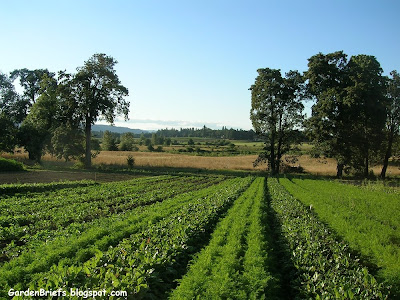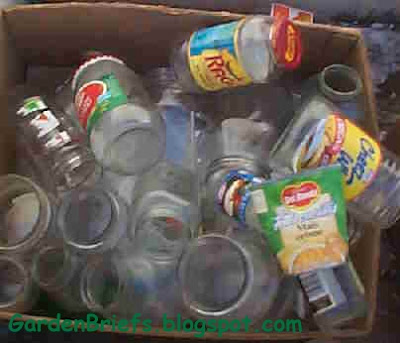
SALINAS, CALIFORNIA - For up to seven years, California Liquid Fertilizer sold what seemed to be an organic farmer's dream, brewed from fish and chicken feathers.
The company's fertilizer was effective, inexpensive and approved by organic regulators. By 2006, it held as much as a third of the market in California.
But a state investigation caught the Salinas-area company spiking its product with ammonium sulfate, a synthetic fertilizer banned from organic farms.
As a result, some of California's 2006 harvest of organic fruits, nuts and vegetables – including crops from giants like Earthbound Farm – wasn't really organic.
According to documents obtained by The Bee through a Public Records Act request, California Department of Food and Agriculture officials were notified of the problem in June 2004 but didn't complete their investigation and order the company to remove its product from the organic market until January 2007.
State officials knew some of California's largest organic farms had been using the fertilizer, the documents show, but they kept their findings confidential until nearly a year and a half after it was removed from the market. No farms lost their organic certification.
The nonprofit California Certified Organic Farmers, which certifies about 80 percent of the state's organic acreage, decided not to penalize farms that had used the product on the grounds that farmers did not know they were using an unapproved chemical.
The state could have pursued harsher penalties against California Liquid Fertilizer, including violation of the California's organic product law, which carries fines of up to $5,000, according to agriculture department spokesman Steve Lyle. It also could have referred the case to the attorney general's office for civil action as an unfair business practice.
"We did not pursue those courses of action because our priority was to remove the product from the market," Lyle said. "More process would have delayed that." The investigation took as long as it did, he said, because the case was complex.
The trouble has continued. In November 2007, the distributor of another organic liquid fertilizer, representing about 5 percent of the market, pulled its product in the middle of another state investigation. Rumors in the industry point to another major disclosure as soon as this month.
Synthetic fertilizers don't present food safety risks, but the organic movement has always opposed them because they take a great deal of energy to produce, decrease natural soil fertility and can pollute water.
Above all, the California Liquid Fertilizer case shows how much the organic regulatory system depends on trust.
Organic Changes
Organic farming started with small operations that rejected modern agriculture's huge, chemical-dependent fields in favor of diversified plots fertilized with old-fashioned compost, manure and cover crops. Today, organic farms still do without synthetic fertilizers and pesticides. But much else is radically different.
Sales of organic products have soared from $5 billion nationwide a decade ago to $24 billion today, according to the Organic Trade Association. California accounts for nearly 60 percent of the U.S. harvest of organic produce.
The biggest organic operations now cultivate thousands of acres and sell to mainstream buyers like grocery chains.
With farms under pressure to cut costs and deliver big harvests, demand has grown for a new class of potent liquid fertilizers that help crops thrive.
"Organic agriculture is becoming very dependent on these amendments," said Thaddeus Barsotti, who runs Capay Organic farm in Yolo County. "If you don't use them, and your competitor is using them, you're going to suffer."
Liquid fertilizers work particularly well for cool weather crops like strawberries and salad greens, and market leaders Earthbound and Driscoll's became big customers for California Liquid Fertilizer, according to executives from those companies.
But liquid fertilizers are used on farms producing virtually every variety of organic fruit, nut and vegetable. On his mid-sized farm, Barsotti likes to give his bok choy, cabbage and pepper crops a nitrogen boost early in the growing season, though he said he never used California Liquid Fertilizer's products.
As organic farming has gotten big, it also has struggled to maintain shoppers' trust in the integrity of its products.
Most shoppers interviewed at the Sacramento Natural Foods Co-op and the Whole Foods Market on Arden Way were a bit cynical about the industry – and they weren't surprised to hear that a major violation of organic standards had slipped through the regulatory system.
"There's a large amount of money to be made as we get more into paying for the quality of our food," said Emmi Felberg of Plymouth.
As a gardener, Felberg knows it's tough to get concentrated nitrogen from true organic sources. She said any farmer ought to be suspicious about fertilizers that seem too good to be true.
"These guys are professionals," she said. "If it looks like a chemical and smells like a chemical, it probably is a chemical."
The Investigation
The state learned of the problems at California Liquid Fertilizer from a whistleblower. In a June 18, 2004, complaint, the former employee alleged that for five years ammonium sulfate had been used in the company's liquid fertilizer.
A year later, according to state records, state Department of Food and Agriculture inspector Pierre Labossiere took the first sample of Biolizer XN, the company's leading product, from Tanimura & Antle Inc., an Earthbound Farm partner in Salinas.
 Laboratory analysis supported the allegations, and in July 2005, Labossiere asked California Liquid Fertilizer to explain why, the records show. He never got an answer, and during multiple follow-up visits to the firm's factory near the town of Gonzales was told that the fish and feathers used to make the product were unavailable for sampling.
Laboratory analysis supported the allegations, and in July 2005, Labossiere asked California Liquid Fertilizer to explain why, the records show. He never got an answer, and during multiple follow-up visits to the firm's factory near the town of Gonzales was told that the fish and feathers used to make the product were unavailable for sampling.Over the next year, Labossiere followed up, finding indications of ammonium sulfate in six more samples at farms and fertilizer dealers around the state. In February 2006, he twice intercepted tank cars of ammonium sulfate in a Salinas railyard. Receipts showed the liquid had been shipped to California Liquid Fertilizer from a plant in Decatur, Ill.
California Liquid Fertilizer's then-president, Peter Townsley, did not respond to repeated phone calls from The Bee or to a written request for comment.
Labossiere had caught the fertilizer maker red-handed. But the product remained on the market for nearly six more months before state officials took action.
The state had other things to worry about that fall. In September, an outbreak of a deadly strain of E. coli was traced to Salinas Valley spinach packaged by the parent company of Earthbound Farm. For weeks, national news media scrutinized the government's oversight of the produce industry.
In January 2007, the agriculture department agreed to a settlement with Townsley that removed his product from the market but kept the reasons obscure. The violation was recorded as "improper labeling." In a letter to the Eugene, Ore.-based nonprofit Organic Materials Review Institute, which had approved the product for use on organic farms, Townsley said he was pulling the product because of an inadvertent chemical substitution.
The outcome of the case surprised Dave DeCou, the Oregon institute's executive director. State investigators had contacted him for information about Biolizer.
"I was expecting (the state) to come out with some kind of indictment," he said. "My sense was that they didn't want to have another dirty mark on California agriculture."
Temptation To Fake
Per pound of nitrogen, synthetic fertilizers like ammonium sulfate and urea cost as little as one-twentieth as much as approved organic sources like ground-up fish carcasses.
"If you could take urea and sell it organic, you could make a lot of money," said Jim Coburn, marketing manager for Western Farm Service, a major agrochemical retailer.
Under federal standards, the nitrogen in a fertilizer for organic farming must come from a natural source. But standard laboratory analyses used by organic regulators tell only how much nitrogen is in a fertilizer, not where it came from.
More sophisticated chemical-isotope tests can give an indication – though not definitive proof – of a fertilizer's origins, said Sam Myoda, executive vice president of IEH Laboratories, near Seattle.
Myoda has been hired both by fertilizer makers wanting to prove their product genuine and big growers that want to make sure they aren't being duped. In tests this past year, Myoda said, he has found that a number of fertilizers sold to organic farmers show signs of being from synthetic sources.
Regulating 'Certified Organic'
The U.S. Department of Agriculture decides what materials may be used on an organic farm, and the state agriculture department plays a role in keeping the industry honest – mainly by investigating complaints.
But the review of specific brands of fertilizers, pesticides and so on falls mostly to the Organic Materials Review Institute, which is federally authorized to evaluate organic farming products.
That approval process, though, is based on information submitted by manufacturers. In the case of California Liquid Fertilizer, the fertilizer investigated by the state had been certified by the institute, but the company hadn't been truthful about what it contained, state documents show.
The Organic Materials Review Institute does investigate complaints and now gives special scrutiny to fertilizers, according to spokesman Miguel Guerrero. But each year the organization routinely inspects only about a dozen of the 570 companies whose products it certifies. If it finds a violation, the institute can withdraw certification, but it lacks the authority to pursue stiffer penalties.
The state Department of Food and Agriculture, by contrast, can issue fines as well as tell manufacturers to remove products from the market. Spokesman Lyle said staff members recently have stepped up oversight of the organic fertilizer sector. In 16 inspection visits since February 2007, officials have found only minor violations, he said.
Though the state forced California Liquid Fertilizer to pull its leading product, Townsley stayed in business at the Gonzales plant. In January 2008, the factory was sold to Converted Organics Inc., a publicly traded fertilizer maker headquartered in Boston. Townsley is now a technology officer for Converted Organics. His base salary is $200,000 a year.
from The Sacramento Bee






